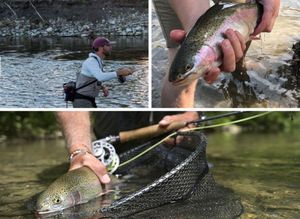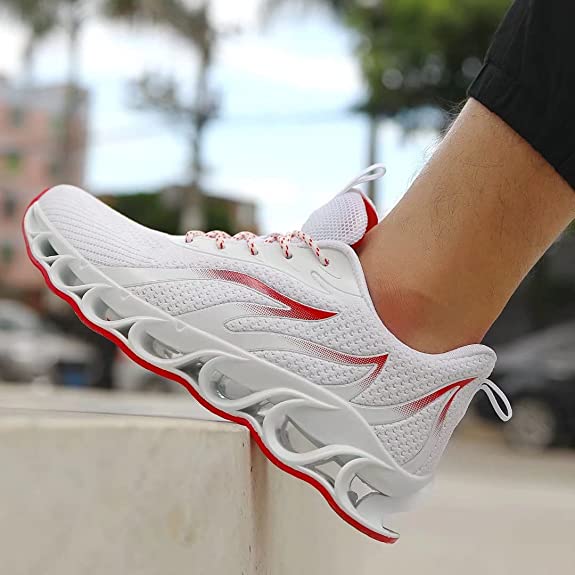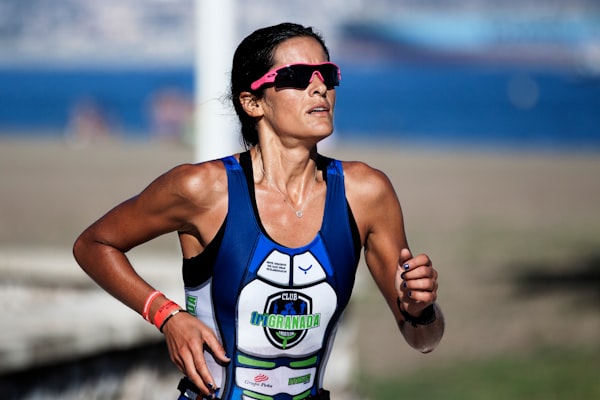Finding the perfect fit for your running shoes can be a bit like Goldilocks trying to find the right porridge – it has to be just right. With so many factors to consider, from the length of your longest toe to the way your feet swell during a run, it's no wonder that the question of whether to go up or down a size in running shoes is a common one.
Key Takeaways:
- Understanding the importance of proper fit in running shoes to prevent injuries and improve performance.
- Factors to consider when determining the right shoe size, include foot measurements and natural changes in foot size.
- Practical tips for trying on and selecting running shoes that fit well.
The First Step: Measuring Your Feet
Before you even step into a shoe store, it's crucial to have your feet measured. Feet change over time, and it's not uncommon for your foot size to fluctuate. A professional fitting at a shoe store can provide you with your current foot size, arch length, and width, ensuring that you start your search for the perfect running shoes with accurate information.
Understanding Foot Dynamics
Generally speaking, your feet swell during the day and during a run. This means that the shoes that fit perfectly in the morning might become tight and uncomfortable by the end of the day. It's best to have your feet measured when they are at their largest, usually at the end of the day or after a workout, to account for this natural expansion.
The Importance of Toe Box Size
The toe box of your running shoes should provide enough room for your toes to wiggle freely. There should be a thumb's width of space between your longest toe and the end of the shoe to ensure a proper fit. This extra room is essential as it accommodates the natural forward movement of your feet when you are running.
Arch Length and Shoe Fit
When trying on running shoes, pay attention to your arch length. This is the distance from your heel to the ball of your foot. Sometimes, your arch length will indicate a different shoe size than your overall foot length. Shoes that fit well will support your arch properly and prevent your foot from sliding forward, which can lead to blisters.
The Debate: Going Up a Half-Size
Many runners find that buying running shoes a half size larger than their regular shoe size provides the extra space needed for comfort and foot expansion. A half-size-up can make a significant difference in the fit, especially for those with a bony bump known as a "Haglund's deformity" or a wider foot.
When Full-Size Matters
In some cases, going up a full size might be necessary. This is particularly true for runners who have significantly wider or longer feet than average. It's also worth considering if you wear thicker socks or orthotics, which can require more space inside the shoe.
The Right Fit for Your Heels
The fit around your heels is just as important as the toe box. Your heels should fit snugly, but not so tight that they cause discomfort. There should be minimal slipping when you walk or run, as this can lead to irritation and heel blisters.
Seasonal Considerations in Shoe Sizing
When deciding on the right size for your running shoes, it's important to consider the time of year. Most people don't realize that our feet can swell in hotter temperatures and slightly contract in colder ones. This means the fit of your running shoes might vary depending on the season. When trying on shoes in the summer, ensure there's a thumb's width of space between your big toe and the tip of the shoe to accommodate any expansion.
Conversely, in colder months, while you still want wiggle room, you might not need as much as you would when it's warm. However, don't make the mistake of buying shoes that are too snug, thinking they will stretch out. Always aim for a half-size bigger to ensure comfort. Remember, standing in shoes will give you a better idea of the fit, as your feet naturally expand under your body weight.
The Influence of Running Terrain
The terrain you plan to run on should also influence how your running shoes fit. For those who frequently hit the trails, a snugger fit might be necessary to prevent the foot from sliding around inside the shoe, which can lead to blisters or loss of control on uneven ground. In this case, a thumb's width of space might be too much, and a closer fit could be more beneficial, ensuring that the shoe acts as an extension of your foot.
On the other hand, if you're mostly running on flat, even surfaces like tracks or treadmills, you might prioritize comfort over precision. This is where a little extra room – about a half size bigger – can matter, providing that additional space for your feet to expand and breathe during a long run. It's a delicate balance between secure fit and comfort, and the right choice often depends on the running conditions you'll most frequently encounter.
Narrow Choices for Narrow Feet
For those with narrow feet, finding the right fit can be a challenge. It might be tempting to go down a size to achieve a snug fit, but this can lead to other issues like cramped toes or pressure on the top of the foot. Instead, look for brands that offer narrow options or shoes with adjustable features like laces that can be tightened for a better fit.
The Role of Socks in Shoe Fitting
Never underestimate the impact of socks when trying on running shoes. The thickness of the socks you plan to wear while running should be considered when choosing running shoes. Bring your favorite pair to the shoe store for the most accurate fitting.
A Test Run is Crucial
Before you buy running shoes, take them for a test run. Most shoe stores have a treadmill or a space where you can run a bit to see how the shoe fits in action. This is the best way to ensure that there's no slipping, pinching, or rubbing.
Listen to the Experts
A running coach or a specialist at a running shoe store can provide valuable advice on how to choose running shoes. They can assess your gait, running style, and foot shape to recommend shoes that fit properly and support your running needs.
The Brand Difference
Different brands can have varying fits, even if the size is the same. It's essential to try on multiple brands to find the one that offers the right fit for your feet. Don't be surprised if you're a different size in different brands.
The Impact of Worn Shoes
Running in shoes that are too worn can affect how new shoes feel. If you're wearing an old pair with compromised cushioning and support, it can make it harder to judge the fit of new shoes. Make sure to assess new shoes based on their own merits.
Muscles and Movement
Remember that your foot muscles need to move and flex while running. Shoes that are too tight can restrict this movement, leading to discomfort and potential injuries. Ensure there's enough room for your feet to function naturally.
The Slip Test
To check if the shoes are too big, do a slip test. Stand in the shoes and lift your heels. If they slip out easily, the shoes might be too large. A bit of heel movement is normal, but your foot should not slide out of the shoe.
Summary
Choosing the right size for your running shoes is a balance between ensuring enough space for your feet to expand and maintaining a snug fit to prevent blisters and slipping. Remember to have your feet measured, consider the time of day, account for socks, and take a test run. When in doubt, consult with a running coach or a specialist at a shoe store. Now that you know what to consider in selecting a shoe size check out my selection of the best running shoes for men.
FAQ Section
Q: How do I know if my running shoes are the right size? A: Your running shoes are the right size if there's a thumb's width of space between your longest toe and the end of the shoe, your heels fit snugly without slipping, and you have enough room to wiggle your toes without the shoe feeling too loose.
Q: Can I wear the same size in running shoes as my regular shoes? A: Not necessarily. Many runners wear running shoes a half size to a full size larger than their regular shoe size to accommodate foot swelling and movement during runs.
Q: Should I buy running shoes based on foot length alone? A: No, you should also consider factors like arch length, foot width, and overall fit. It's important to try on shoes and possibly consult with a professional to ensure the best fit for your running needs.






